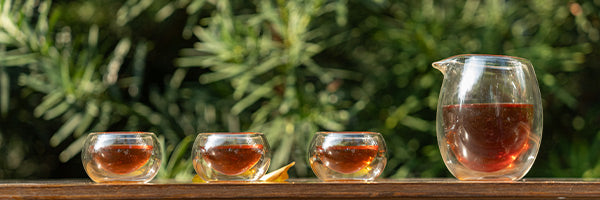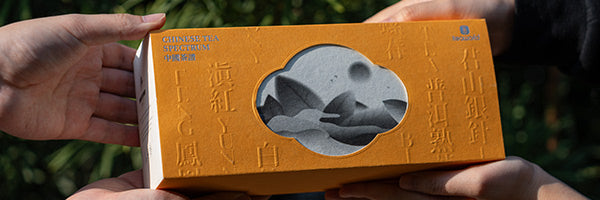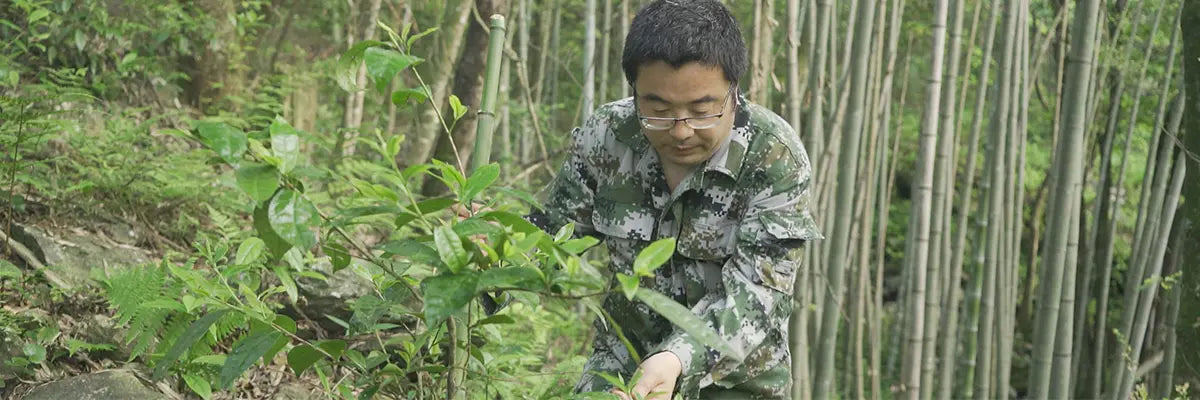Что такое черный чай?
Черный чай известен своей высокой степенью окисления (70%~90%) и теплым красным цветом чайного настоя. Он имеет насыщенный и нежный вкус, часто с ноткой сладости.

Самые ранние черные чаи можно проследить до династии Сун (960-1279 н. э.) в Китае. Сегодня существует множество китайских сортов черного чая, таких как Лапсанг Сушонг, Юньнаньский черный чай и Цзинь Цзюнь Мэй. Кроме того, по всему миру существуют и другие сорта, включая Ассамский черный чай, Дарджилингский черный чай и Эрл Грей.
Что такое темный чай?
Отличительной чертой темного чая является его уникальный процесс постферментации. Постферментация относится к процессу укладки чайных листьев, прошедших завяливание и скручивание, вместе с соответствующей температурой и влажностью, что позволяет чайным листьям ферментироваться под действием микроорганизмов.
Мне интересно, почему черный чай и темный чай имеют такие похожие названия?
Одна из теорий предполагает, что исторически первым черным чаем, с которым столкнулись жители Запада, был китайский Lapsang Souchong . Когда люди увидели темный цвет сухих листьев Lapsang Souchong, они стали называть этот листовой чай «черным чаем». Если перевести его в соответствии с китайским названием «红茶 (hóngchá)», то правильным английским названием будет «red tea». Однако английское название «black tea» со временем сохранилось, и менять его не собирались.

Темный чай появился в Европе и других регионах позже, чем черный чай. Когда люди задумались о переводе темного чая согласно его китайскому названию «黑茶 (hēichá)», они обнаружили, что слово «черный», которое точно передает значение «黑(hēi)», уже использовалось. Что делать? К счастью, было еще и слово «темный». Вот так и было принято английское название темного чая.
Разница во вкусе и аромате между черным и темным чаем

Для тех, кто любит мягкий вкус чая, помимо черного и темного чая, стоит попробовать и улун. Многие высоко оцененные лучшие улуны , такие как Oriental Beauty и Da Hong Pao , предлагают мягкий вкус, демонстрируя при этом характерный сильный аромат листового улуна .

Разница в регионах производства черного и темного чая
Темный чай в основном производится в Китае. Среди них провинция Юньнань в Китае является крупным производителем выдержанного чая пуэр. Помимо Юньнани, существуют местные известные районы производства темного чая в Хунани, Хубэе, Гуанси и других регионах Китая. Может быть увлекательно исследовать темные чаи из разных регионов, используя пробник чая , чтобы сравнить их характеристики.
Рекомендации по выбору черного чая
1. Лапсанг Сушонг
Традиционная версия Lapsang Souchong имеет красновато-коричневый вид сухих листьев, насыщенный красный цвет настоя, мягкий и стойкий вкус и уникальный дымный аромат. Благодаря этому дымному аромату Lapsang Souchong высоко ценится и считается одним из лучших листовых чаев . Дымный аромат получается благодаря уникальному процессу копчения традиционного Lapsang Souchong на сосновых дровах.

2. Юньнаньский черный чай (Дянь Хун)
Сухие листья Дянь Хун красновато-коричневые с золотистыми кончиками. Чайный настой черного чая Юньнань ярко-красный, с насыщенным вкусом и заметной сладостью, часто сопровождаемой нотками сладости, меда и ароматом батата.
Рекомендации по выбору темного чая
1. Зрелый Пуэр

2. Чай Лю Бао
Чай Лю Бао славится своими характеристиками «красный, крепкий, выдержанный и мягкий». Он имеет насыщенный красный цвет, густой и выдержанный аромат и сладкий и мягкий вкус. Высококачественный чай Лю Бао несет ароматы соснового дыма и ореха бетеля. Подарочные наборы чая, содержащие чай Лю Бао, являются отличным выбором в качестве полезных и вкусных подарков для семьи и друзей.

В целом, несмотря на схожесть названий, черный и красный чай во многих отношениях существенно различаются, что делает их двумя совершенно разными видами чая.
Надеюсь, эта статья поможет вам лучше понять китайский чай и научиться выбирать любимые сорта чая.












































































